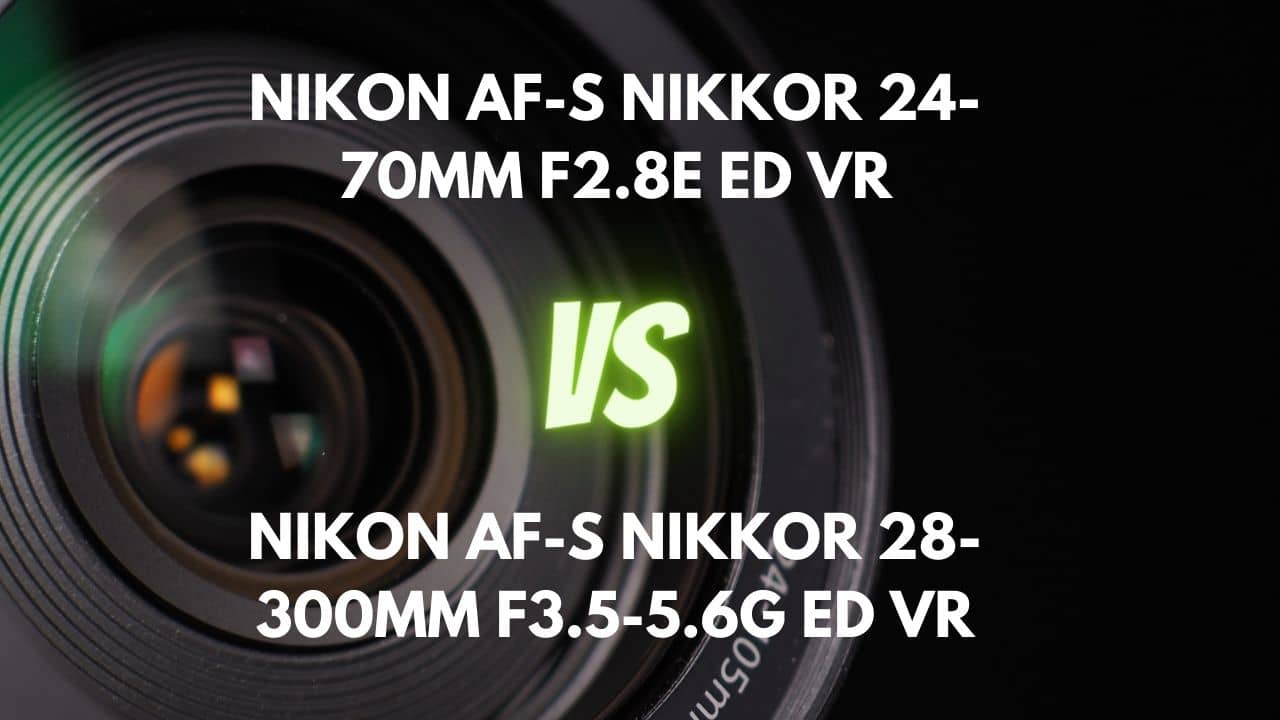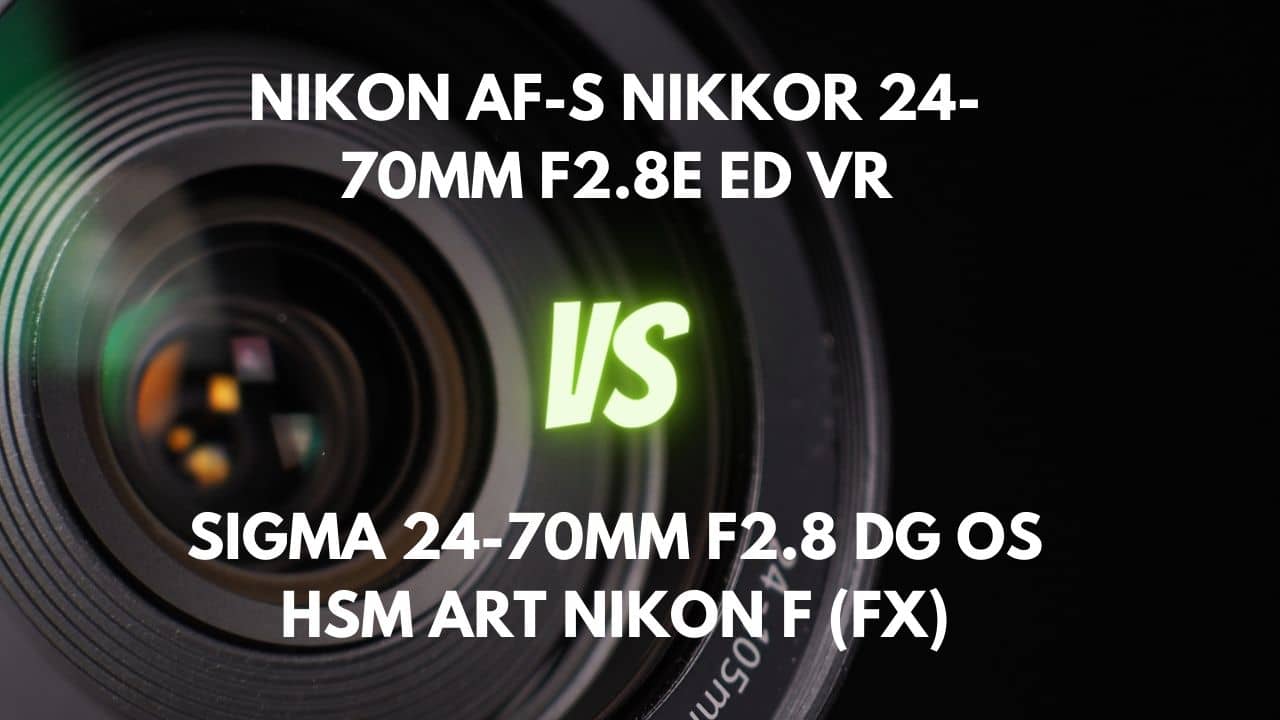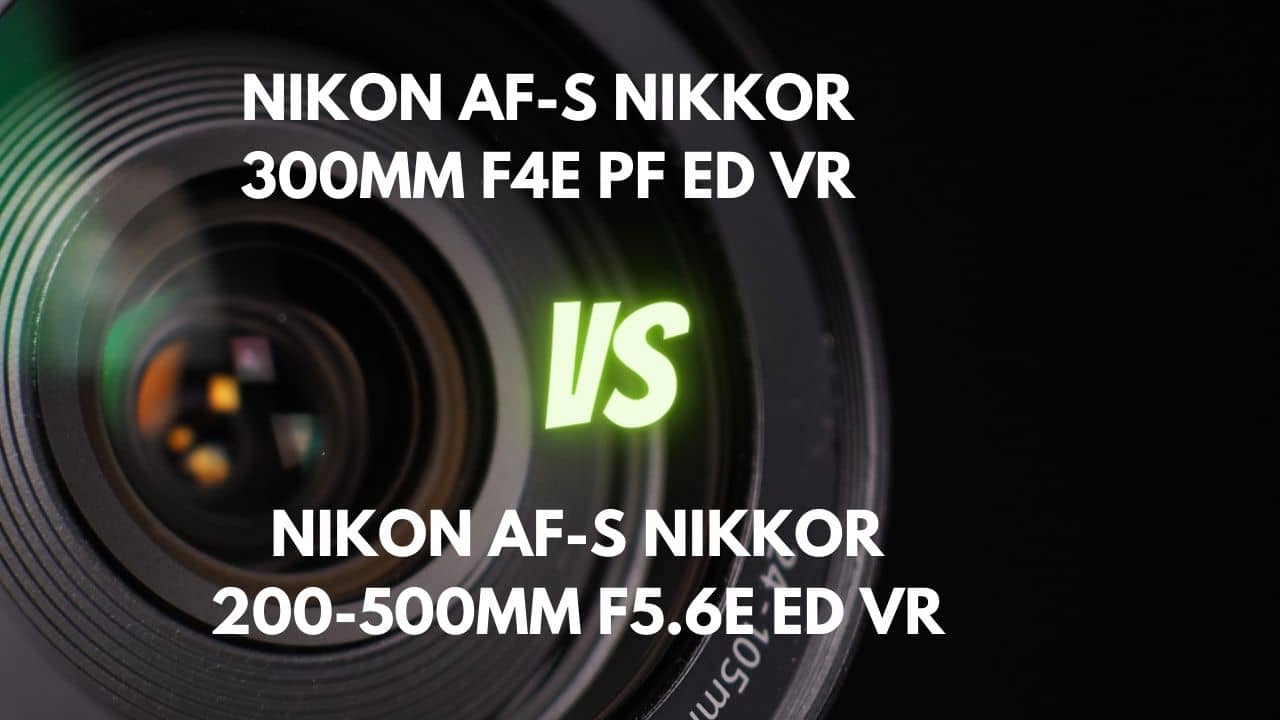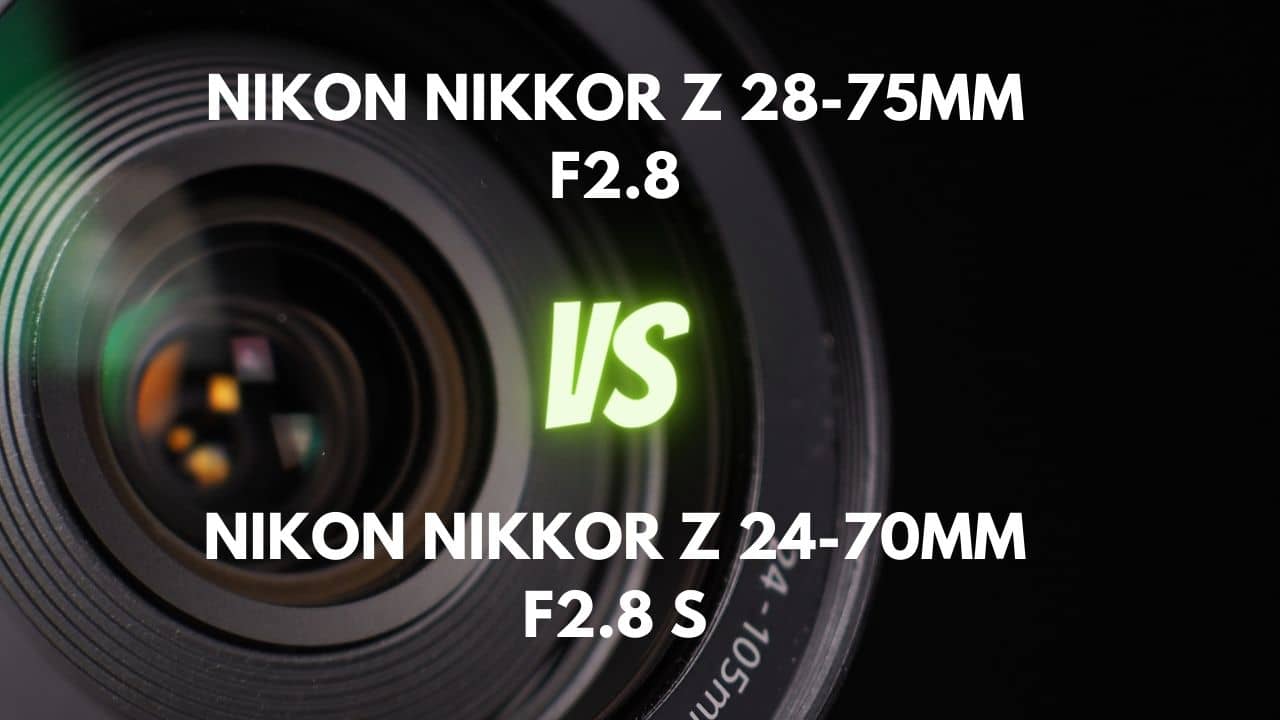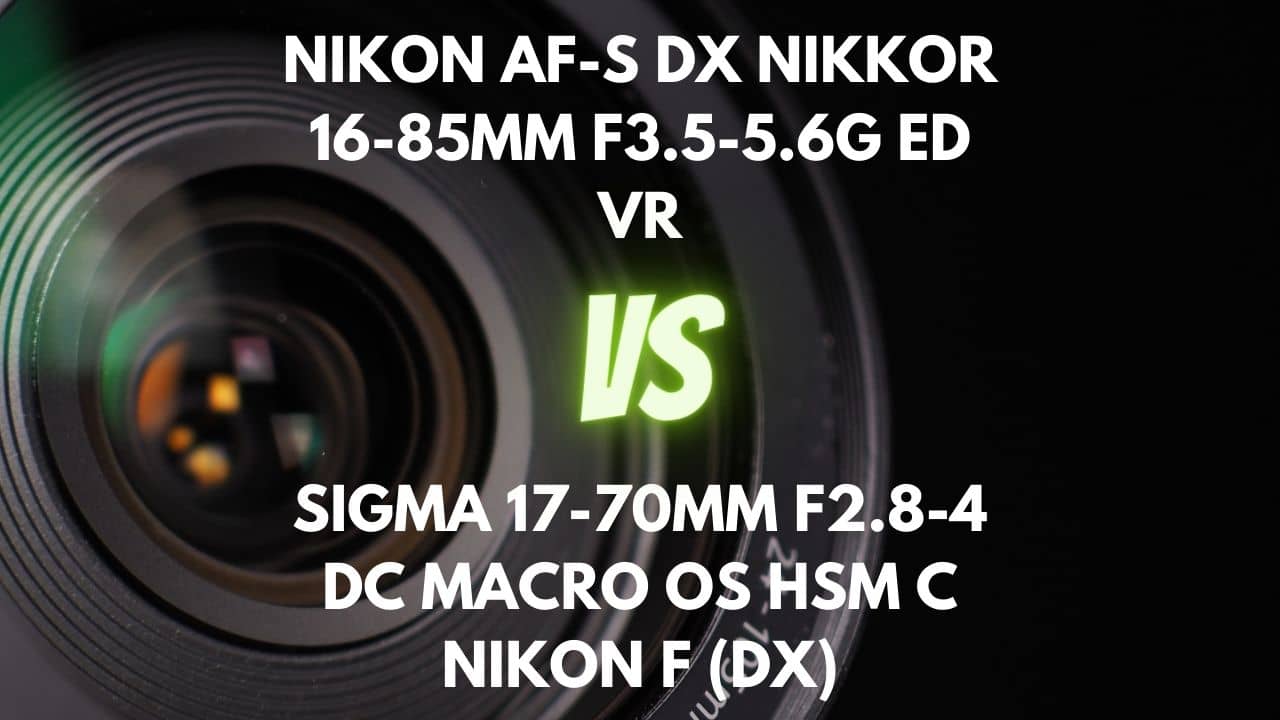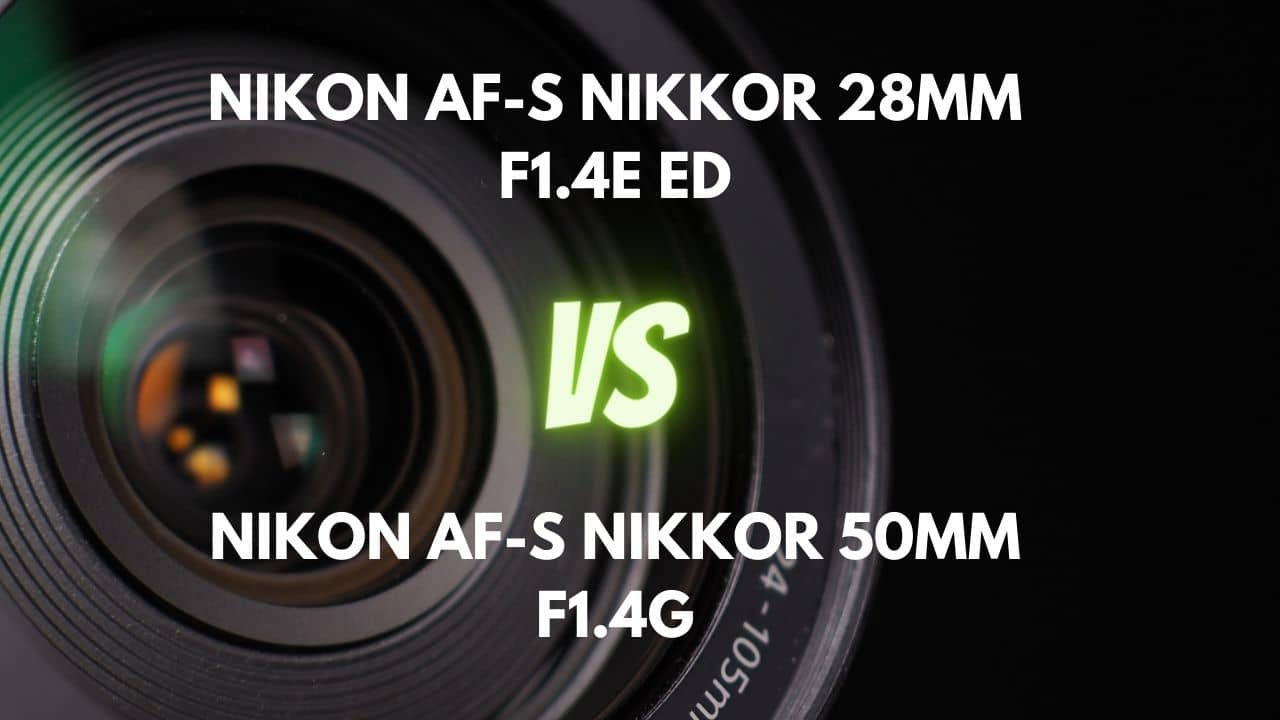Are you on the hunt for the perfect versatile lens that can capture stunning landscapes, vibrant street scenes, and intimate portraits? Look no further, as we dive deep into a comparison of two popular lenses: the Nikon DX 18-55mm f/3.5-5.6 and the Nikon DX 18-70mm f/3.5-4.5.
Both lenses are well-regarded for their flexibility and performance, catering to a wide range of photography styles and situations. Whether you’re a beginner photographer looking to expand your skills or a seasoned pro seeking to add a versatile lens to your arsenal, this comparison is a must-read.
In this article, we’ll explore the unique strengths and weaknesses of each lens, taking into account factors such as sharpness, bokeh quality, autofocus performance, optical stabilization, and more.
You’ll discover how each lens fares in various types of photography, from landscape to portrait, and learn the secrets behind getting the most out of your chosen lens.
By the end of this comparison, you’ll have a clearer understanding of which lens best suits your needs, enabling you to capture breathtaking images with confidence and ease.
So, buckle up and get ready for an in-depth, engaging journey through the world of versatile lenses that will elevate your photography game to new heights.
Let’s find the perfect lens match for you!
Overview
| Nikon AF-P DX NIKKOR 18-55mm F3.5-5.6G VR | Nikon AF-S DX NIKKOR 18-70mm F3.5-4.5G IF-ED | |
|---|---|---|
| Max Aperture | F3.5-5.6 | F3.5-4.5 |
| Aperture Type | Variable | Variable |
| Focal Range (mm) | 18-55 | 18-70 |
| Max Format | APS-C / DX | APS-C / DX |
| Zoom Ratio (X) | 3.1 | 3.9 |
The Nikon DX 18-55mm f/3.5-5.6 has a maximum aperture of f/3.5-5.6 and a variable aperture type. Its focal range is 18-55mm, and it’s designed for APS-C / DX format cameras. With a 3.1x zoom ratio, this lens offers decent versatility for everyday photography.
On the other hand, the Nikon DX 18-70mm f/3.5-4.5 has a maximum aperture of f/3.5-4.5, also with a variable aperture type. Its focal range is slightly broader, ranging from 18-70mm, and it’s also designed for APS-C / DX format cameras. With a 3.9x zoom ratio, this lens offers a bit more flexibility in terms of zooming capabilities.
When comparing these two lenses, the 18-70mm lens has a larger maximum aperture, which can provide better low light performance and shallower depth of field for subject isolation. Both lenses have variable apertures, which makes them more affordable and lightweight but may compromise image quality and low light performance compared to fixed aperture lenses.
In terms of focal range, the 18-70mm lens offers a slightly longer reach, providing more flexibility for various shooting scenarios. The 3.9x zoom ratio of the 18-70mm lens is also higher than the 3.1x zoom ratio of the 18-55mm lens, making it more versatile for framing and composition adjustments.
Overall, the 18-70mm lens appears to be a superior choice due to its larger maximum aperture, longer focal range, and higher zoom ratio. However, the specific requirements and intended use of the lens, as well as factors such as size, weight, and cost, should also be taken into consideration when deciding between these two lenses.
Design and Ease of Use
| Nikon AF-P DX NIKKOR 18-55mm F3.5-5.6G VR | Nikon AF-S DX NIKKOR 18-70mm F3.5-4.5G IF-ED | |
|---|---|---|
| Diameter x Length (mm) | ⌀64.5×62.5mm | ⌀73×75.5mm |
| Weight (gr) | 205 | 390 |
| Filter Thread (mm) | 55 | 67 |
| Weather Sealing | No | No |
| Zoom Method | Rotary (extending) | Rotary (extending) |
| Distance Scale | No | Yes |
| DoF Scale | No | No |
| Hood Supplied | No | Yes |
| Hood Code | HB-N106 | HB-32 |
The Nikon DX 18-55mm f/3.5-5.6 has a diameter of 64.5mm and a length of 62.5mm, making it relatively compact and lightweight at 205 grams. Its zoom method is rotary (extending), which means the lens physically extends when zooming in or out.
This design is generally more straightforward and may result in lower prices and increased durability. However, extending zoom lenses can be more difficult to weather-seal and may affect the camera’s balance during zooming.
On the other hand, the Nikon DX 18-70mm f/3.5-4.5 has a larger diameter of 73mm and a length of 75.5mm. This lens is noticeably heavier, weighing in at 390 grams. Like the 18-55mm lens, it also uses a rotary (extending) zoom method. Its larger size and weight may make it more cumbersome to handle and affect the overall balance of your camera setup.
Considering the dimensions and weight, the 18-55mm lens has the advantage of being more compact and lightweight, making it easier to carry and handle during extended periods. This lens might be more suitable for photographers who prioritize portability and discreetness.
Lens Mount and Barrel
The Nikon DX 18-55mm f/3.5-5.6 features a plastic barrel and mount, making it lighter and more budget-friendly. There are eight metal contacts on the mount, which serve as an interface between the lens and the camera. However, it lacks a rubber gasket around the mount. The retractable lens barrel design reduces its size when not in use, but its physical size changes when zooming in or out.
In contrast, the Nikon DX 18-70mm f/3.5-4.5 boasts a metal lens mount with a rubber sealing gasket, which is unusual for its price range. This feature enhances its durability and weather resistance. The lens barrel, made of high-quality plastic with a slightly textured finish, is resistant to marks. The barrel extends by an inch and a half at 70mm, and rotates slightly during zoom, which may require readjusting filters.
Plastic lens barrels are generally lighter and more affordable, whereas metal lens barrels offer greater durability and a more professional feel. Metal mounts are sturdier and can withstand more wear and tear, while plastic mounts are more prone to damage over time.
In conclusion, the 18-70mm lens mount and barrel seem superior, as they offer better durability and weather resistance due to the metal mount and rubber sealing gasket. The high-quality plastic used in the lens barrel also provides a more premium feel.
Weather Sealing
The Nikon DX 18-55mm f/3.5-5.6 lacks weather sealing, making it more susceptible to dust, moisture, and light water splashes. It doesn’t have gaskets at the lens mount, internal seals at the rings, switches, and front of the barrel, nor a fluorine coating on the front element. This absence of protective features may limit its performance and durability in challenging environments.
On the other hand, the Nikon DX 18-70mm f/3.5-4.5 offers weather sealing around the gasket, providing better protection against environmental elements. However, it still lacks internal seals at the rings, switches, and front of the barrel, meaning it’s not fully weather-sealed.
Weather sealing is crucial for photographers who often shoot in harsh conditions or outdoors, as it ensures durability, performance, and investment protection. Fully weather-sealed lenses are more robust and resistant to dust, moisture, and light water splashes compared to non-sealed lenses.
In conclusion, the 18-70mm lens has superior weather sealing compared to the 18-55mm lens due to the presence of a sealed gasket. However, neither lens is fully weather-sealed, which may require extra precautions when shooting in challenging environments. Your choice should depend on your specific needs and shooting conditions. If you frequently shoot outdoor in unpredictable weather, opting for a lens with better weather sealing, like the 18-70mm lens, can be a wise investment.
Rings
The Nikon DX 18-55mm f/3.5-5.6 features a zoom ring with markings for 18mm, 24mm, 35mm, 45mm, and 55mm, providing a rubber grip for comfortable handling. The zoom ring rotates smoothly, offering a tactile experience that is suitable for most users.
However, the focus ring is narrow and located at the front of the barrel, making manual focusing less than ideal. Additionally, there is no windowed distance scale, depth-of-field indicator, or extension lock switch on the zoom ring.
In contrast, the Nikon DX 18-70mm f/3.5-4.5 has both a focus ring and a zoom ring. The focus ring is thin with no distinguishing features other than its position, while the zoom ring is rubberized and larger. The texture on the rings could be improved for better differentiation, but users will likely adapt to it over time.
The zoom ring is quite stiff and not fluid, and the barrel extends significantly during zoom, which may require filter readjustments. However, the focus ring is decent and provides a reasonable amount of resistance. The lens includes a distance scale but lacks depth-of-field or infrared markings and a hyperfocal point marking.
In conclusion, neither lens offers a perfect ring design, but the 18-55mm lens has a slight advantage in terms of zoom ring ergonomics and smoothness. On the other hand, the 18-70mm lens has a more comprehensive focus ring and a distance scale. Your choice should depend on your preferences and shooting style. If you prioritize smooth and comfortable zoom adjustments, the 18-55mm lens may be more suitable. However, if you prefer a lens with better focus control and a distance scale, the 18-70mm lens may be the better option.
Switches/Buttons
The Nikon DX 18-55mm f/3.5-5.6 features minimal switches/buttons, with only a small lock button present for retracting and extending the lens. As a result, switching between auto and manual focus and engaging or disengaging image stabilization must be done through the camera’s menu system.
The lens release button on the outer barrel must be pressed while rotating the zoom ring to unlock the lens and extend it to the shooting position. When collapsing the lens, the button must be held in while rotating the zoom ring, reducing the lens’s overall length by approximately 30mm.
On the other hand, the Nikon DX 18-70mm f/3.5-4.5 has a Manual Focus button on the left side, which works in both the M/A position (autofocus with manual override) and the M position (manual focus only). However, there are no other switches or buttons on this lens.
In conclusion, while neither lens offers an extensive array of switches/buttons, the 18-70mm lens has a slight advantage with its dedicated Manual Focus button, providing more convenient access to manual focus control. In contrast, the 18-55mm lens relies on the camera’s menu system for similar functionality, which may be less convenient for some users. If you prefer quick access to manual focus options, the 18-70mm lens is the better choice.
Filter Thread
The Nikon DX 18-55mm f/3.5-5.6 features a plastic 55mm filter thread, a common size that makes it easy to find filters. The front element does not rotate during focus, which is convenient for using circular polarizing filters without any issues. However, the front element does rotate when zooming, which may make using a polarizer slightly cumbersome in certain situations. Despite this, the lens remains relatively easy to use with filters.
On the other hand, the Nikon DX 18-70mm f/3.5-4.5 has a 67mm filter thread size made from high-quality plastics. The front element does not rotate during focusing due to the lens’s internal focusing mechanism, making it easy to use with graduated and polarizing filters. However, the 67mm diameter can make filters, especially circular polarizers, quite pricey and may require users to purchase step-up rings to use with larger filter sizes.
In conclusion, both lenses offer advantages and drawbacks when it comes to filter threads. The 18-55mm lens has a more common filter thread size, making it easier to find filters at a lower cost, while the 18-70mm lens has a larger filter thread size that offers better compatibility with graduated and polarizing filters but may be more expensive.
Lens Hood
The Nikon DX 18-55mm f/3.5-5.6 does not include a lens hood in its package, requiring the purchase of an optional HB-N106 bayonet hood separately. This plastic hood with a matte finish has an ergonomic bevel designed to fit snugly onto the lens, effectively blocking unwanted light and reducing lens flare and ghosting. The hood can be smoothly rotated to adjust its direction according to the light source’s orientation, making it a useful accessory for outdoor photography.
In contrast, the Nikon DX 18-70mm f/3.5-4.5 comes with a petal-shaped hood included in the standard package. This plastic hood has a butterfly-style bayonet mount that can be reversed onto the lens for carrying. Although it is relatively shallow and provides less shading for the front element, it still helps shield the lens from extraneous light, reducing flare or loss of contrast. However, the hood may rotate slightly during zoom, necessitating filter readjustments.
In conclusion, the lens hood of the 18-70mm lens is superior as it is included in the standard package, unlike the 18-55mm lens, which requires a separate purchase. Although the 18-70mm lens hood is not perfect and may need occasional readjustments, its inclusion offers better value and convenience for photographers who want to reduce lens flare and maintain image contrast right out of the box.
Focusing and Optical Stabilization
| Nikon AF-P DX NIKKOR 18-55mm F3.5-5.6G VR | Nikon AF-S DX NIKKOR 18-70mm F3.5-4.5G IF-ED | |
|---|---|---|
| Autofocus | Yes | Yes |
| AF Motor | Stepper motor | Silent Wave Motor |
| Rotating Front Element | Yes | Does not rotate on focusing |
| Min Focus Distance | 0.25m | 0.38m |
| Max Magnification (X) | 0.38 | 0.16 |
| Full-Time Manual Focus | Yes | Yes |
| Focus Method | Internal | Internal |
Focusing Performance
The Nikon DX 18-55mm f/3.5-5.6 boasts a quick and near-silent autofocus system, making it perfect for shooting videos without distracting noise. Its focusing is smooth, responsive, and approximately 30% faster than older models. The lens performs reliably in low-light situations and features an instant manual focus override for user convenience. With an internally focusing design, the lens maintains a constant length regardless of focus and zoom settings. Minimal focus breathing makes it suitable for various photography and videography applications.
On the other hand, the Nikon DX 18-70mm f/3.5-4.5 offers excellent autofocus performance due to its silent wave motor. While it performs exceptionally well in bright light situations, it may lag slightly in low-light conditions, particularly at the telephoto end. The lens provides manual focus override and smooth manual focus action, with the thin focus ring offering good resistance for fine adjustments. Like the 18-55mm lens, it has an internally focusing design and exhibits minimal focus breathing, ensuring consistent performance across different shooting situations.
In conclusion, both lenses demonstrate impressive focusing performance, but the 18-55mm lens has a slight edge due to its faster focus speed and reliable low-light performance. The near-silent autofocus system makes it ideal for videography, while the instant manual focus override adds versatility. However, both lenses remain suitable options for a range of photography and videography applications, catering to users’ specific needs and preferences.
Optical Stabilization
The Nikon DX 18-55mm f/3.5-5.6 boasts a 4-stop optical image stabilization, which effectively mitigates camera shake and allows for sharper photos even at slower shutter speeds. The VR technology works impressively, enabling shooting at shutter speeds as slow as 1/5 second while maintaining acceptable sharpness.
The VR system operates silently and features only one mode of stabilization, but it remains effective across various shooting conditions. However, actual results for shutter speeds will depend on the photographer’s technique and shooting conditions.
On the other hand, the Nikon DX 18-70mm f/3.5-4.5 does not include optical stabilization. When using this lens, it’s crucial to employ proper camera-holding techniques and, if necessary, a tripod or other support to avoid camera shake at slower shutter speeds, particularly at longer focal lengths.
In conclusion, the 18-55mm lens offers superior optical stabilization compared to the 18-70mm lens. This advantage can be particularly beneficial in low-light conditions, handheld shooting, or when recording video.
However, it’s important to consider that optical stabilization is not always essential, especially for landscape photography, and factors such as in-body image stabilization or using a tripod may compensate for the absence of optical stabilization in the 18-70mm lens.
Image Quality
| Nikon AF-P DX NIKKOR 18-55mm F3.5-5.6G VR | Nikon AF-S DX NIKKOR 18-70mm F3.5-4.5G IF-ED | |
|---|---|---|
| Special Elements | Two aspherical elements + super integrated coating | 3x ED glass elements and 1x aspherical lens element |
| Diaphragm Blades | 7 | 7 |
| Circular Aperture | Yes | Yes |
Aberration
The Nikon DX 18-55mm f/3.5-5.6 exhibits a controlled amount of lateral chromatic aberration, with noticeable improvements compared to the AF-S VR II version. Although some purple and yellow chromatic aberrations may appear in the corners of the frame, these are easily corrected in-camera or with post-processing software.
In contrast, the Nikon DX 18-70mm f/3.5-4.5 demonstrates well-controlled chromatic aberration throughout its focal length range. Minimal visible issues are observed in high contrast regions towards the edges of the frame at either end of the zoom.
In conclusion, the 18-70mm lens outperforms the 18-55mm lens in terms of aberration control. With minimal visible chromatic aberration issues throughout its focal length range, the 18-70mm lens offers superior image quality.
However, the 18-55mm lens still delivers a commendable performance, with chromatic aberrations that can be easily corrected during post-processing.
Sharpness
The Nikon DX 18-55mm f/3.5-5.6 showcases commendable sharpness, especially in the center, throughout its focal range. Center sharpness is particularly impressive when stopped down to f/8 or f/11. Corner sharpness is slightly softer, particularly at wide-open apertures, but significantly improves when stopping down.
The optimal sharpness is achieved around f/8 to f/11, depending on the focal length. At 18mm, the lens is remarkably sharp wide open, and at 55mm, it maintains sharpness across the frame. Stopping down further enhances sharpness and contrast, making the lens suitable for various applications at focal lengths like 35mm.
In comparison, the Nikon DX 18-70mm f/3.5-4.5 exhibits excellent sharpness performance. Center sharpness is outstanding even at the maximum aperture, and clarity towards the edges of the frame improves as the lens is stopped down.
Peak quality across the frame is attained between f/5.6 and f/8 at all focal lengths. The sharpness remains impressive even at f/3.5 or 4.5 at the tele end, and the lens becomes very sharp when stopped down to f/8.
To conclude, the 18-70mm lens slightly outperforms the 18-55mm lens in terms of sharpness, offering impressive clarity at various apertures and focal lengths. However, both lenses provide respectable sharpness for their respective purposes.
Bokeh Quality
The Nikon DX 18-55mm f/3.5-5.6 produces bokeh that is subjective in quality. Highlights render as septagonal shapes, but with some outlines. While this lens may not provide a smooth and silky bokeh, it can achieve shallow depth-of-field photos when zoomed in to 55mm and shooting objects at the closest possible distance of 25 cm. Overall, the bokeh quality produced by this lens is considered satisfactory.
On the other hand, the Nikon DX 18-70mm f/3.5-4.5 creates bokeh that is generally unremarkable and not particularly smooth. Out-of-focus areas can appear somewhat busy and exhibit an onion-skinned pattern. Although the bokeh may not be exceptionally pleasing or beautiful, it is fairly typical for a lens in this category and price range.
In conclusion, neither lens stands out in terms of bokeh quality, as both produce average results. However, it is important to remember that bokeh quality is not typically a primary concern for landscape photography, which are designed for capturing broader scenes and emphasizing depth of field. But if you shoot portraits frequently, it’s better to get a dedicated portrait lens.
Flare/Ghosting
The Nikon DX 18-55mm f/3.5-5.6 exhibits very controlled ghosting and flare, owing to the Super Integrated Coating applied to reduce these effects. Impressively, the lens manages to handle bright light without significant loss of micro-contrast, even when shooting directly into the sun. However, when bright highlights are present in the background, they may appear as circular shapes and outlining can be common.
In comparison, the Nikon DX 18-70mm f/3.5-4.5 is fairly resistant to flare and ghosting, even when shooting into the light. The supplied hood effectively shields the front element from extraneous light that may cause flare or loss of contrast.
However, if the light source is directly in the picture, there may be some contrast reduction or ghosting, which is typical of virtually all modern zooms. It’s important to carefully position the horizon in the frame or address it in post-processing. Flare performance is quite good, except for direct sunlight.
In conclusion, both lenses perform well in terms of flare and ghosting control, with the 18-55mm lens slightly outperforming the 18-70mm lens due to its Super Integrated Coating. Nevertheless, both lenses are capable of handling challenging lighting conditions, and choosing between them should depend on other factors.
Vignetting
The Nikon DX 18-55mm f/3.5-5.6 exhibits vignetting, particularly at its widest aperture of f/3.5 and the widest focal length of 18mm, causing corners to appear darker by about 2.5EV. However, stopping down to f/5.6 and higher significantly reduces the darkening.
Vignetting is also noticeable at the mid-range focal length of around 35mm but becomes least visible at 55mm. Overall, while the lens displays some degree of vignetting, it is not a major concern and can be easily corrected in post-processing software.
On the other hand, the Nikon DX 18-70mm f/3.5-4.5 suffers from noticeable vignetting at 18mm, especially when used wide open. However, stopping down to f/8 or beyond can greatly reduce the issue, and post-processing software can also easily remove it. The amount of vignetting varies at different focal lengths, with 50mm being the best and 18mm being the worst. Some users have reported that using a polarizing filter exacerbates the issue.
In conclusion, both lenses experience vignetting, particularly at the wide end of their focal range. The 18-55mm lens seems to handle vignetting slightly better, particularly at the telephoto end. However, vignetting in both lenses can be reduced by stopping down the aperture or corrected in post-processing software.
Distortion
The Nikon DX 18-55mm f/3.5-5.6 exhibits varying levels of distortion at different focal lengths. At 18mm, there is noticeable barrel distortion that can be corrected through software or in-camera correction. By 35mm, distortion is almost eliminated and remains absent until 55mm, where slight pincushion distortion may be discernible but not usually affecting shots in most situations. Overall, distortion can be corrected with software or in-camera correction and does not significantly detract from the lens’s overall performance.
In contrast, the Nikon DX 18-70mm f/3.5-4.5 displays some distortion, particularly at the wide end (18mm) where barrel distortion is present, measuring at 4.22% according to Imatest. However, the distortion is uniform across the frame, making it relatively easy to correct in post-processing software. At 70mm, the lens shows a much lower level of distortion, with only 0.484% pincushion distortion, which is much less noticeable.
In conclusion, both lenses exhibit distortion, with the 18-55mm lens demonstrating more variation across its focal range. The 18-70mm lens, on the other hand, has a more uniform distortion across the frame, making it easier to correct in post-processing. While neither lens is distortion-free, the 18-70mm lens perform slightly better in terms of distortion control.
Final Verdict
In conclusion, the Nikon DX 18-70mm f/3.5-4.5 is generally superior to the Nikon DX 18-55mm f/3.5-5.6 in terms of larger maximum aperture, longer focal range, higher zoom ratio, better weather sealing, and better distortion control. The 18-70mm lens also offers impressive sharpness and aberration control.
However, the 18-55mm lens has its own advantages, including superior optical stabilization, faster focusing performance, better flare and ghosting control, and a more compact and lightweight design.
Neither lens excels in bokeh quality, and both experience vignetting and distortion. However, these shortcomings can be corrected in post-processing software.
When choosing between these two lenses, it is essential to consider your specific needs and preferences.
If you prioritize portability, low-light performance, and optical stabilization, the 18-55mm lens might be the better choice.
On the other hand, if you need a lens with a longer focal range, better weather sealing, and superior image quality, the 18-70mm lens is likely the better option.

